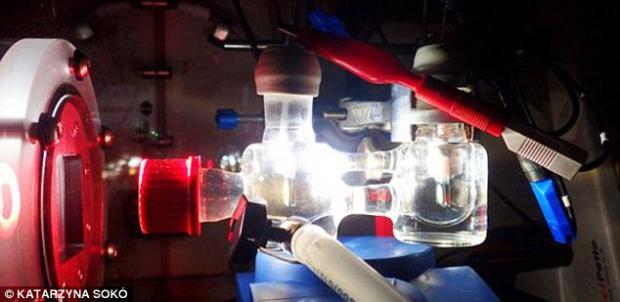
Breaking News
 Why Mamdani's socialist revolution in New York has sparked a civil war for Democrats...
Why Mamdani's socialist revolution in New York has sparked a civil war for Democrats...
 Tech tycoon whose parents fled communism offers six reasons NYC will become hellish dystopia...
Tech tycoon whose parents fled communism offers six reasons NYC will become hellish dystopia...
 NASA detects bizarre boost in interstellar visitor's speed as it moves toward Earth
NASA detects bizarre boost in interstellar visitor's speed as it moves toward Earth
 Britain "Doomed" Under Labour As Wealthy Scramble To "Get The Hell Out Of London
Britain "Doomed" Under Labour As Wealthy Scramble To "Get The Hell Out Of London
Top Tech News
 Japan just injected artificial blood into a human. No blood type needed. No refrigeration.
Japan just injected artificial blood into a human. No blood type needed. No refrigeration.
 The 6 Best LLM Tools To Run Models Locally
The 6 Best LLM Tools To Run Models Locally
 Testing My First Sodium-Ion Solar Battery
Testing My First Sodium-Ion Solar Battery
 A man once paralyzed from the waist down now stands on his own, not with machines or wires,...
A man once paralyzed from the waist down now stands on his own, not with machines or wires,...
 Review: Thumb-sized thermal camera turns your phone into a smart tool
Review: Thumb-sized thermal camera turns your phone into a smart tool
 Army To Bring Nuclear Microreactors To Its Bases By 2028
Army To Bring Nuclear Microreactors To Its Bases By 2028
 Nissan Says It's On Track For Solid-State Batteries That Double EV Range By 2028
Nissan Says It's On Track For Solid-State Batteries That Double EV Range By 2028
 Carbon based computers that run on iron
Carbon based computers that run on iron
 Russia flies strategic cruise missile propelled by a nuclear engine
Russia flies strategic cruise missile propelled by a nuclear engine
 100% Free AC & Heat from SOLAR! Airspool Mini Split AC from Santan Solar | Unboxing & Install
100% Free AC & Heat from SOLAR! Airspool Mini Split AC from Santan Solar | Unboxing & Install
Scientists have invented a way to create 'unlimited renewable energy'...

Researchers from the University of Cambridge have reached this 'milestone' by splitting water into hydrogen and oxygen.
They did this through using a technique called semi-artificial photosynthesis that is based on the same process plants use to convert sunlight into energy.
Hydrogen, which is produced when the water is split, could potentially be a green and unlimited source of renewable energy.
Researchers did this by reactivating hydrogenase, an enzyme present in algae, that can reduce protons into hydrogen.
Oxygen is produced as a by-product of photosynthesis when the water absorbed by plants is 'split'.
It is one of the most important reactions on the planet because it is the source of nearly all of the world's oxygen.
Researchers used natural sunlight to convert water into hydrogen and oxygen using a mixture of biological components and manmade technologies.
Academics at the Reisner Laboratory in Cambridge's Department of Chemistry developed the new technique of solar-driven water-splitting.



